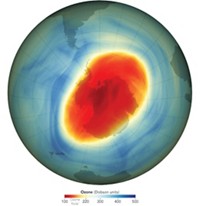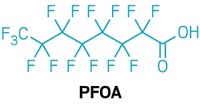Advertisement
Grab your lab coat. Let's get started
Welcome!
Welcome!
Create an account below to get 6 C&EN articles per month, receive newsletters and more - all free.
It seems this is your first time logging in online. Please enter the following information to continue.
As an ACS member you automatically get access to this site. All we need is few more details to create your reading experience.
Not you? Sign in with a different account.
Not you? Sign in with a different account.
ERROR 1
ERROR 1
ERROR 2
ERROR 2
ERROR 2
ERROR 2
ERROR 2
Password and Confirm password must match.
If you have an ACS member number, please enter it here so we can link this account to your membership. (optional)
ERROR 2
ACS values your privacy. By submitting your information, you are gaining access to C&EN and subscribing to our weekly newsletter. We use the information you provide to make your reading experience better, and we will never sell your data to third party members.
Letters to the Editor
DuPont’s FilmTec wins Heroes of Chemistry Award
In the referenced article (C&EN, May 18, 2020, page 37), the fourth paragraph contains the line “DuPont developed FilmTec.” In fact, the story was quite different. FilmTec was founded and developed by researchers from North Star Research and Development Institute who had developed an improved membrane through an interfacial polymerization process. FilmTec was highly successful and was eventually acquired by Dow Chemical. The Dow-FilmTec group became such a powerhouse that it led to one of its competitors, DuPont, withdrawing its product (Permasep) from the desalination field. The more recent merger and reorganization of Dow and DuPont has resulted in the reassignment of the FilmTec product line to continue under the DuPont flag. Thus it is a bit of a stretch to say that DuPont developed FilmTec.
Jim Birkett
Nobleboro, Maine
A bit more on historical ice cores
Thank you for the cover article, “A scientific record at risk,” in the June 15, 2020, issue of C&EN (page 28). Researchers on the chemical record in ice cores (in my case, on Svalbard for 20 years) appreciate the attention given to our work. I would like to offer a bit of clarification about items mentioned in the article. While we understand that tropospheric temperatures in the Arctic in recent years have been increasing faster than other places on Earth, we know that glaciers on Svalbard have been losing mass continuously since the end of the Little Ice Age in about 1860. Also, the diagram on page 33 is missing some information. For example, the period of atmospheric nuclear testing residue (oftentimes cesium-137) found in ice cores (and lake sediments) was from 1954 to 1963 when tests were ended by the Nuclear Test Ban Treaty. Also, in the eastern Arctic, on Svalbard (and perhaps Greenland), the peak years were 1961–2 after detonation of Tsar Bomba on Novaya Zemlya on Oct. 30, 1961. This was the largest atmospheric nuclear detonation (50 megatons of TNT) in world history.
Mark H. Hermanson
Minneapolis
I read with interest the article by Katherine Bourzac in the May 11, 2020, issue of C&EN (page 8) on how C2–C4 polyfluorinated alkyl substances (PFAS) are now being detected in arctic ice cores. The origins of these pollutants were attributed to decomposition of compounds that replace CFCs [chlorofluorocarbons]. However, the reported research was unable to identify the source of the C3 perfluorinated compound. One potential source that was not considered in the research is emissions by the microelectronics industry. Perfluorinated C3 and C4 compounds are used extensively as etchants in thin-film manufacturing and chamber-cleaning processes. Results suggested these pollutants have been increasing in the environment since 1990, and that progression mirrors the rise in the microelectronics industry. In the US, emissions are tightly regulated, and any microelectronics manufacturing plants are required to have active scrubbing devices in place to prevent these compounds from getting released into the atmosphere. Many of today’s active microelectronics fabrication operations occur in Asia, where emissions are not as tightly regulated. Jet stream patterns would carry these emissions directly into the area of the Arctic where the cores were collected.
Ed Smith
Ocean View, Delaware







Join the conversation
Contact the reporter
Submit a Letter to the Editor for publication
Engage with us on Twitter